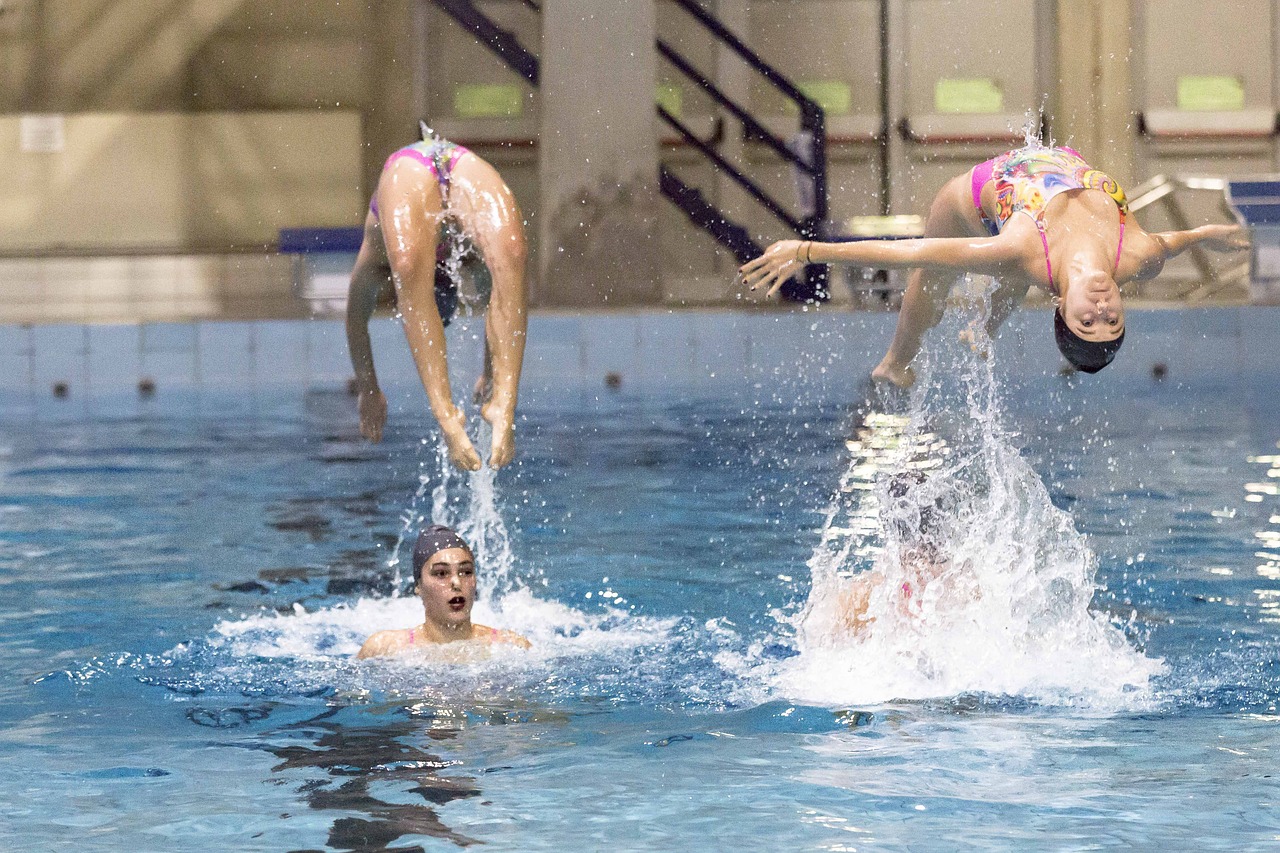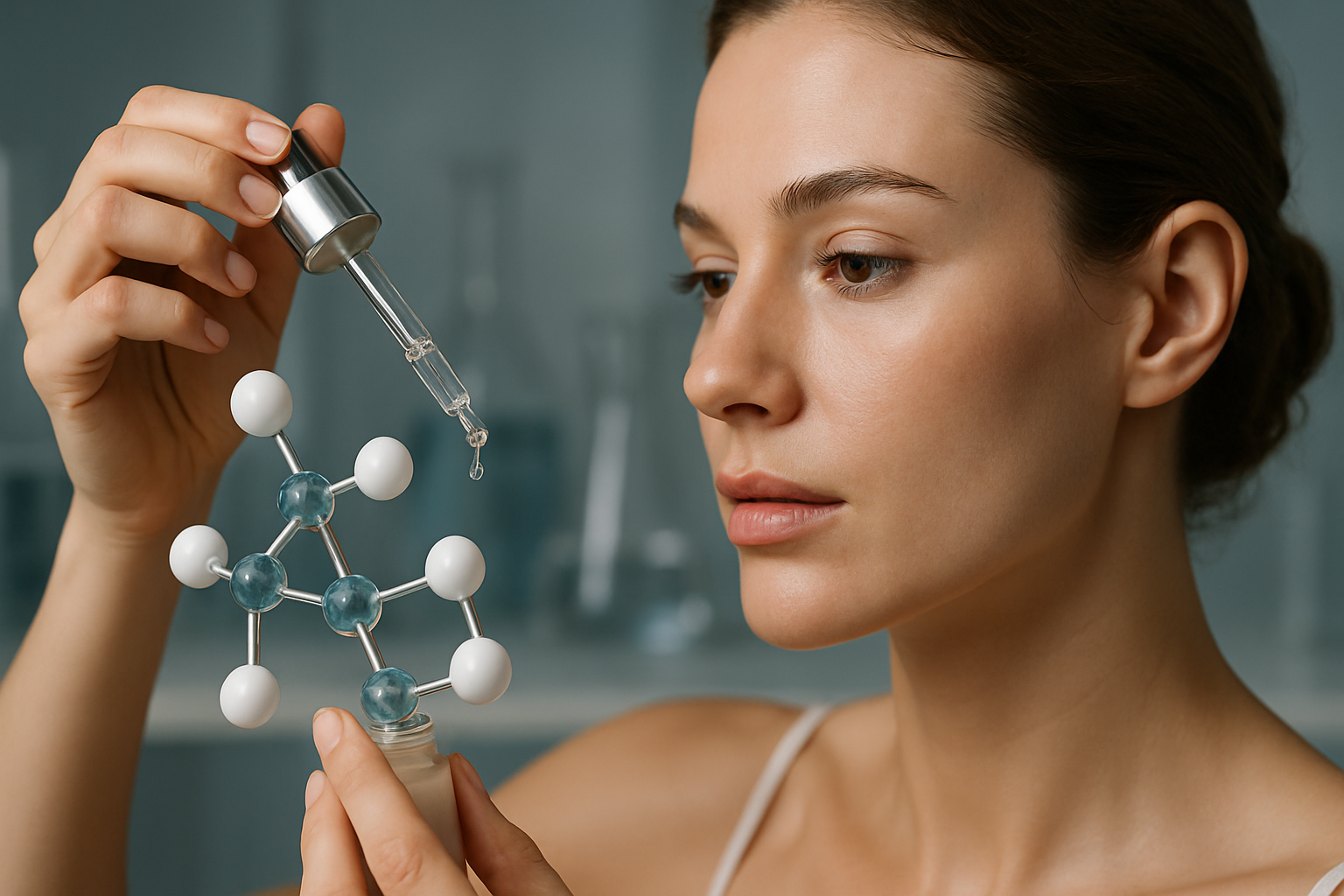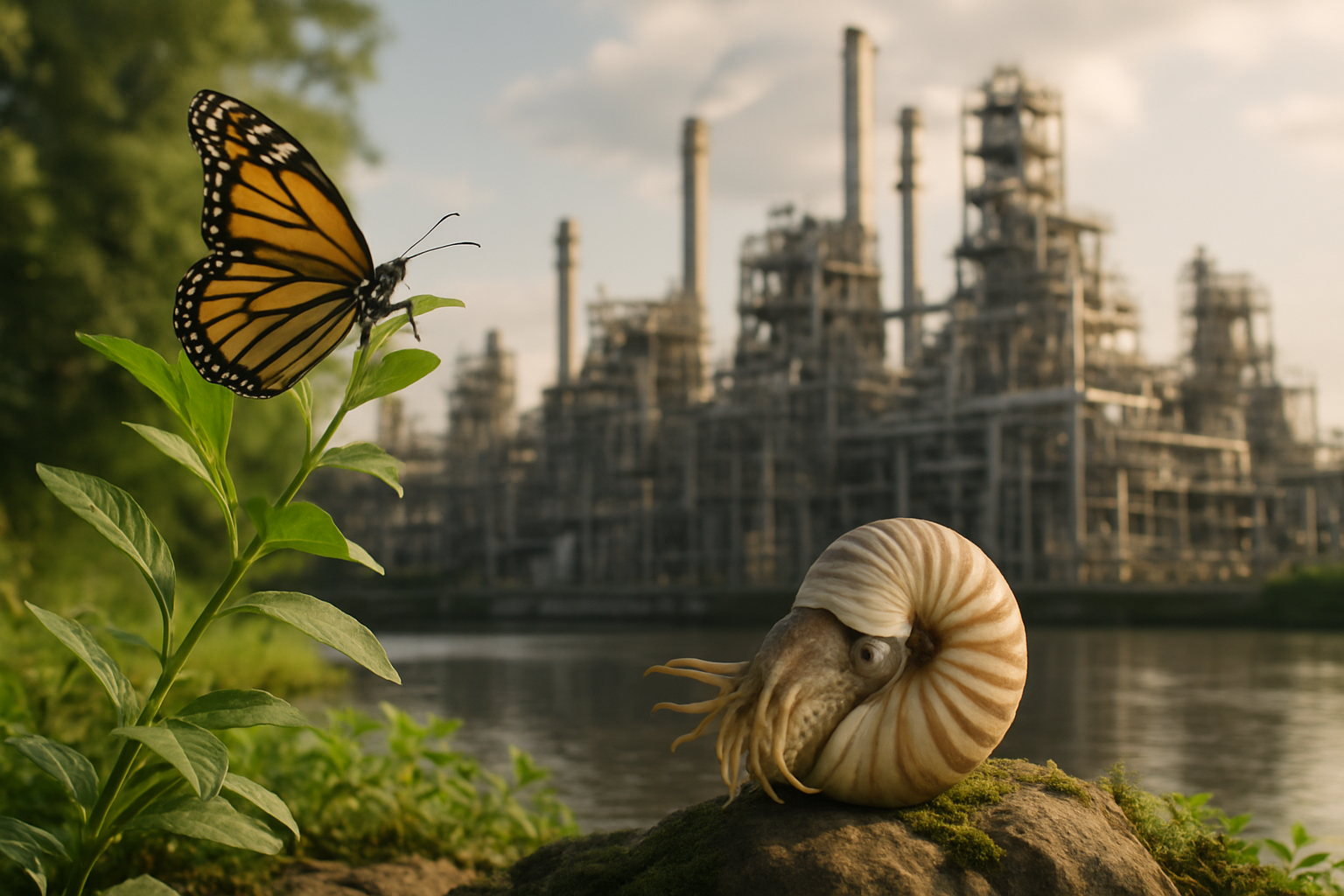Biomechanics of Artistic Swimming: The Science Behind Aquatic Grace
In the shimmering waters of Olympic pools, artistic swimmers captivate audiences with their mesmerizing routines. But beneath the sequins and synchronized movements lies a complex interplay of physics, physiology, and athleticism. This article delves into the biomechanics of artistic swimming, exploring how these athletes defy gravity and create art in an aquatic medium.

The Foundations of Buoyancy and Propulsion
At the heart of artistic swimming lies the fundamental principle of buoyancy. Archimedes’ principle states that the upward buoyant force exerted on a body immersed in a fluid is equal to the weight of the fluid displaced by the body. For artistic swimmers, mastering buoyancy is crucial for maintaining stability and achieving the desired positions in water.
The human body naturally tends to float due to its composition of tissues with varying densities. However, artistic swimmers must constantly manipulate their buoyancy to perform intricate movements both above and below the water’s surface. This requires a deep understanding of how different body positions affect buoyancy and the ability to make rapid adjustments during routines.
Propulsion in artistic swimming is achieved through a combination of arm and leg movements. The sculling technique, a cornerstone of the sport, involves moving the hands in a figure-eight pattern to create small vortices that generate lift and thrust. This allows swimmers to maintain vertical positions and move through the water with precision.
The eggbeater kick, another essential technique, involves rotating the legs in opposite circular motions to create a continuous upward force. This powerful movement enables swimmers to rise out of the water and maintain elevated positions, defying gravity in spectacular lifts and formations.
Hydrodynamics and Drag Reduction
Artistic swimmers must navigate the complex world of hydrodynamics to maximize their performance. Water resistance, or drag, plays a significant role in the sport, both as a challenge to overcome and a force to harness for certain movements.
To minimize drag, swimmers employ streamlined body positions and carefully choreographed transitions. The science of hydrodynamics informs everything from the design of swimsuits to the execution of underwater movements. Swimmers learn to manipulate their bodies to create laminar flow, reducing turbulence and allowing for smoother, more efficient movement through the water.
Conversely, drag can be intentionally increased to create resistance for certain artistic effects. By adjusting body position and surface area exposed to the water, swimmers can create dramatic slowdowns or use the water’s resistance to enhance the visual impact of their movements.
The Role of Core Strength and Stability
The core muscles play a pivotal role in artistic swimming, serving as the foundation for nearly every movement. A strong core enables swimmers to maintain proper body alignment, execute precise movements, and transition smoothly between positions.
The demands placed on the core in artistic swimming are unique. Swimmers must maintain stability while constantly adjusting to the shifting aquatic environment. This requires not only strength but also exceptional proprioception and neuromuscular control.
Research has shown that artistic swimmers develop remarkable core endurance and stability. A study published in the Journal of Sports Sciences found that elite artistic swimmers demonstrated significantly higher levels of core strength and endurance compared to other aquatic athletes.
This core strength is particularly crucial for maintaining inverted positions, a hallmark of artistic swimming. When upside down in the water, swimmers must engage their core muscles to stabilize their spine and maintain proper alignment, all while executing complex movements with their limbs.
Breath Control and Lung Capacity
One of the most challenging aspects of artistic swimming is the need for extended breath-holding during underwater sequences. The biomechanics of respiration in this sport are fascinating, involving both physiological adaptations and strategic techniques.
Artistic swimmers develop exceptional lung capacity and CO2 tolerance through rigorous training. They learn to maximize their oxygen intake during brief surface intervals and efficiently manage their air supply during prolonged underwater routines.
The Mammalian Dive Reflex, an evolutionary adaptation that helps conserve oxygen during submersion, plays a role in artistic swimming. This reflex slows the heart rate and redirects blood flow to vital organs, allowing swimmers to stay underwater for longer periods.
Swimmers also employ specific breathing techniques to enhance their performance. Controlled hyperventilation before a routine can help increase oxygen stores and delay the onset of the urge to breathe. However, this must be done carefully to avoid the risk of shallow water blackout.
Spatial Awareness and Proprioception in an Aquatic Environment
The ability to maintain precise spatial awareness while submerged is a crucial skill in artistic swimming. Swimmers must coordinate their movements with teammates and music cues, often while upside down or rotating rapidly.
This requires exceptional proprioception, the sense of the body’s position and movement in space. Artistic swimmers develop heightened proprioceptive abilities through specialized training exercises that challenge their balance and orientation in the water.
The vestibular system, responsible for balance and spatial orientation, undergoes significant adaptations in artistic swimmers. Research published in the European Journal of Applied Physiology has shown that these athletes exhibit superior vestibular function compared to non-swimmers, allowing them to maintain their orientation even during complex underwater maneuvers.
Visual cues play a limited role in underwater orientation, as visibility is often restricted. Instead, swimmers rely heavily on kinesthetic awareness and tactile feedback from the water to judge their position and movements. This sensory integration is a key component of the biomechanics of artistic swimming.
Synchronization and Team Dynamics
While individual biomechanics are crucial, the true magic of artistic swimming emerges in team performances. The synchronization of multiple swimmers requires a deep understanding of group dynamics and the principles of collective motion.
Research in the field of swarm intelligence has provided insights into how groups of individuals can achieve remarkable synchronization. In artistic swimming, this manifests as the ability of team members to coordinate their movements with millisecond precision, creating the illusion of a single, multi-limbed entity moving through the water.
The biomechanics of team synchronization involve complex feedback loops between swimmers. Subtle cues, such as the feel of water displacement or the sound of a teammate’s movement, are used to maintain timing and spacing. This requires not only individual skill but also a heightened awareness of the group’s collective motion.
Studies have shown that synchronized swimmers develop a form of “collective consciousness” during performances. Electroencephalogram (EEG) measurements have revealed increased neural synchronization between team members during routines, suggesting a unique form of non-verbal communication and coordination.
The Physics of Lifts and Throws
Some of the most spectacular elements in artistic swimming routines are the lifts and throws, where swimmers propel their teammates out of the water. These maneuvers require a sophisticated understanding of physics and biomechanics to execute safely and effectively.
The biomechanics of a lift begin underwater, where the base swimmers generate upward force through powerful leg movements. The physics of momentum transfer come into play as this force is transmitted through the body of the lifted swimmer, propelling them above the surface.
Aerial rotations during throws involve complex calculations of angular momentum and moment of inertia. Swimmers must precisely control their body positions to achieve the desired number of rotations before re-entering the water.
The impact forces experienced during water entry after a lift or throw can be substantial. Artistic swimmers learn techniques to distribute these forces and minimize the risk of injury. This includes proper body alignment and the use of specific entry techniques to break the water’s surface tension.
Biomechanical Analysis and Performance Optimization
Modern artistic swimming has embraced technology and biomechanical analysis to optimize performance. High-speed underwater cameras and motion capture systems allow coaches and scientists to analyze movements with unprecedented detail.
These analyses have led to refinements in technique based on biomechanical principles. For example, studies of the sculling motion have revealed optimal hand orientations and movement patterns to maximize propulsion while minimizing energy expenditure.
Computational fluid dynamics (CFD) simulations are now being used to model the complex interactions between swimmers’ bodies and the water. These simulations help in designing more efficient movements and understanding the hydrodynamics of group formations.
Wearable sensors that can function underwater are providing real-time data on factors such as body position, acceleration, and muscle activation. This information allows for immediate feedback and adjustment during training sessions, helping swimmers fine-tune their biomechanics.
The Role of Flexibility and Joint Mobility
Flexibility plays a crucial role in the biomechanics of artistic swimming, allowing athletes to achieve the extreme ranges of motion required for many movements. The ability to maintain proper body alignment and execute precise movements often depends on exceptional joint mobility.
Artistic swimmers develop extraordinary flexibility, particularly in the hips, shoulders, and spine. This flexibility is not just about achieving aesthetically pleasing positions; it’s fundamental to the biomechanics of many techniques.
For example, the “split position” requires extreme hip flexibility to achieve a full 180-degree leg separation while maintaining proper alignment of the torso. This position is not just for show – it’s often used as a stable base for other movements or as part of complex transitions.
The biomechanics of spinal flexibility are particularly important in artistic swimming. Movements like the “crane” or “ballet leg” require precise control of spinal extension and rotation while maintaining core stability. This combination of flexibility and control allows swimmers to create visually striking shapes in the water.
However, the demands of extreme flexibility must be balanced with the need for joint stability. Artistic swimmers engage in specialized training to develop both passive and active flexibility, ensuring that they can not only achieve extreme ranges of motion but also control and stabilize their joints within those ranges.
Energy Systems and Metabolic Demands
The biomechanics of artistic swimming are intrinsically linked to the sport’s unique metabolic demands. Routines typically last between two to four minutes, requiring a complex interplay of energy systems to sustain high-intensity efforts interspersed with periods of breath-holding.
Artistic swimming primarily relies on the anaerobic energy system, particularly during underwater sequences where oxygen availability is limited. The phosphocreatine system provides immediate energy for short, intense bursts of activity, while anaerobic glycolysis becomes crucial for sustaining effort during longer underwater segments.
However, the aerobic energy system also plays a vital role, especially in recovery during brief surface intervals and in maintaining overall endurance throughout a routine. The ability to rapidly switch between energy systems and efficiently utilize available oxygen is a key aspect of the physiological adaptations seen in artistic swimmers.
Research published in the International Journal of Sports Physiology and Performance has shown that elite artistic swimmers have higher anaerobic thresholds and better oxygen utilization efficiency compared to other athletes. These adaptations allow them to perform complex movements with precision even under the physiological stress of prolonged breath-holding.
The biomechanics of artistic swimming movements are designed to maximize efficiency and minimize energy expenditure. Techniques like sculling and the eggbeater kick are refined to provide maximum propulsion with minimal effort, allowing swimmers to conserve energy for the most demanding elements of their routines.
Injury Prevention and Biomechanical Considerations
The unique biomechanics of artistic swimming present specific injury risks that must be carefully managed. The repeated overhead movements, extreme ranges of motion, and impact forces experienced during lifts and water entries can lead to overuse injuries if not properly addressed.
Shoulder injuries are particularly common in artistic swimming due to the demands placed on the joint during sculling and other arm movements. The biomechanics of these techniques must be carefully analyzed to ensure proper shoulder mechanics and prevent impingement or rotator cuff issues.
Neck and back injuries can also occur, especially during inverted positions and rapid direction changes. Proper core strength and spinal stabilization techniques are essential for protecting these vulnerable areas.
The repetitive eggbeater kick, while fundamental to the sport, can lead to knee and hip issues if not executed with proper biomechanics. Swimmers must develop strong stabilizing muscles around these joints and maintain proper alignment to prevent overuse injuries.
Biomechanical analysis has led to the development of specific injury prevention strategies in artistic swimming. These include targeted strength training programs, technique modifications to reduce joint stress, and carefully planned training progressions to allow for adequate recovery and adaptation.
The Future of Biomechanics in Artistic Swimming
As our understanding of biomechanics and sports science continues to advance, the future of artistic swimming looks incredibly exciting. Emerging technologies and research methodologies are opening up new possibilities for performance enhancement and artistic innovation.
Virtual reality (VR) and augmented reality (AR) technologies are beginning to be explored as training tools for artistic swimmers. These technologies could allow for visualization of complex routines and provide immediate feedback on body position and synchronization without the need for pool time.
Advancements in materials science may lead to the development of new swimwear and accessories that can further enhance hydrodynamics and allow for even more spectacular performances. Smart fabrics that can change properties in response to water pressure or movement could revolutionize costume design in the sport.
Genetic research and personalized training approaches based on individual biomechanical profiles may become more prevalent, allowing coaches to tailor training programs to each swimmer’s unique physiological characteristics.
The integration of artificial intelligence (AI) in biomechanical analysis could provide even more detailed insights into performance optimization. AI algorithms could analyze vast amounts of data from sensors and video footage to identify subtle improvements in technique that human observers might miss.
As the sport continues to evolve, new elements and techniques will undoubtedly emerge, pushing the boundaries of what is physically possible in the aquatic environment. The biomechanics of artistic swimming will remain a fascinating area of study, blending the rigors of science with the creativity of artistic expression.
Conclusion: The Artistry of Human Movement in Water
Artistic swimming represents a unique convergence of physics, physiology, and aesthetic expression. The biomechanics underlying this sport reveal the extraordinary capabilities of the human body when adapted to an aquatic environment.
From the precise control of buoyancy to the complex synchronization of team movements, artistic swimming challenges our understanding of human movement and pushes the boundaries of athletic performance. The sport serves as a living laboratory for the study of hydrodynamics, proprioception, and the limits of human endurance.
As we continue to unravel the biomechanical intricacies of artistic swimming, we gain not only insights that can enhance performance in this specific discipline but also broader understanding of human movement and adaptation. The principles discovered here have applications that extend far beyond the pool, influencing fields from rehabilitation medicine to robotics.
Artistic swimming reminds us that the human body is not just a machine of bones and muscles, but a finely tuned instrument capable of creating beauty through movement. It is a testament to the power of scientific understanding combined with artistic vision, producing performances that continue to inspire and amaze audiences around the world.
In the shimmering waters where science meets art, artistic swimmers will continue to push the limits of human potential, their movements a fluid dance of biomechanical perfection. As we watch their graceful performances, we are witnessing not just a sport, but a celebration of the incredible adaptability and artistry of the human form.





